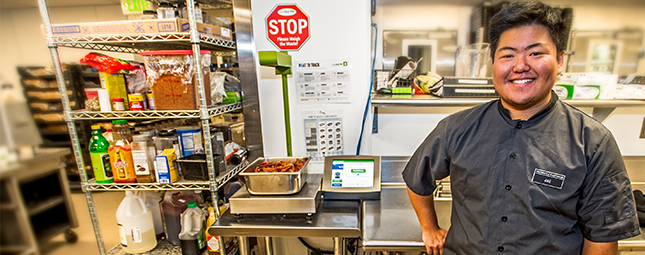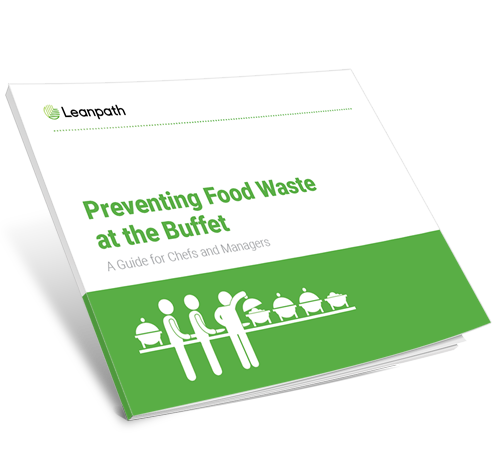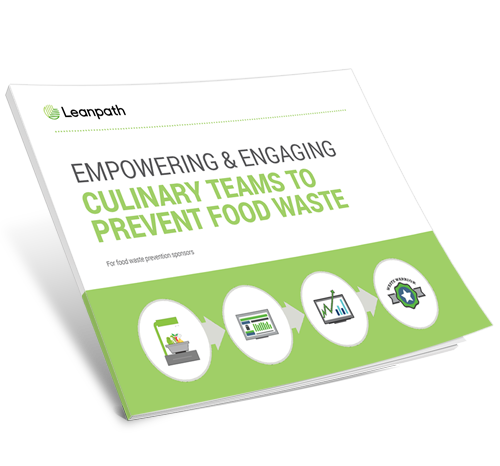Questions I get asked: How does a food waste tracking device fit into my kitchen?

Bringing a new piece of equipment into a busy kitchen is never a decision to be taken lightly. And since food waste prevention is often a brand new part of the kitchen workflow, it’s understandable that there could be a lot of questions about what it means for your processes and team. In the last two years, I’ve visited over 120 kitchens, training them on preventing food waste with Leanpath. Here are the most common questions I get asked about introducing Leanpath equipment into foodservice kitchens.
Where do kitchens put their Leanpath equipment?
Every kitchen is different, and finding the right spot for your Leanpath Tracker comes down to three factors. We will ask you to identify a central area in your kitchen that is easily accessible to everybody who will be tracking waste, which could be your entire staff or designated team members. Ideally, this is a spot where your staff are already used to discarding or tracking food waste, to minimize the impact to existing workflows (more on that below).
You will also need to find a spot that can support a dedicated power outlet and internet connectivity. Finally, you’ll need table or counter space for our 360 Bench Scale or Zap, and floor space against a wall if you use the 360 Floor Scale.
How will this change my workflow?
Depending on your current workflow for disposing of food waste, integrating a food waste prevention system may require changes in two areas:
- The first is making sure all food waste goes to your Leanpath Tracker before being composted, donated, or wherever it’s going. If food waste is currently thrown away in bins scattered around the kitchen, you will need to group your food waste bins in one place, next to the Tracker.
- The second adjustment to workflow is making sure different types of food waste are not mixed before they are tracked. For instance, overproduced lasagna coming back from the buffet line should be tracked before it is mixed with the overproduced green beans coming back from the buffet. That way, you will know exactly how much of each item was wasted, generating data that is detailed and actionable
The Leanpath launch team makes sure to highlight these adjustments early in the onboarding process so you can be ready when it comes time to go live.
How will I connect my Tracker to the internet?
The Tracker connects to the internet in order to transmit the waste events streaming from your kitchen to the cloud, as well as receive updates to maintain and improve your tracking experience in the kitchen. We offer a few ways to connect our devices to the internet:
- For kitchens using our 360 bench scale or floor scale Trackers, Leanpath recommends connecting your Trackers through Ethernet. This provides the most stable and easy to maintain connection. If Ethernet does not already exist in your kitchen, you can work with your facilities and IT teams to install an active port.
- We know that installing Ethernet isn’t always an option, and for these locations Leanpath also offers cellular connectivity. This method uses a 4G sim card installed in your Tracker to connect wirelessly to the internet. Before using 4G, the Leanpath launch team will work with you to ensure there is adequate signal strength for your Tracker.
Do I install my own equipment?
Yes, and it’s easy. Depending on the equipment, the installation process will take 15-30 minutes. For kitchens using 360 bench scales or Zaps, installation can be done by anyone and requires no special tools. Kitchens using a Floor Scale will likely need to engage their facilities team to mount the unit to the wall. Leanpath technical support can assist with any step of the installation process and verify that your Tracker is online after it has been set up.
Download these guides and get started
on your food waste prevention journey today!
 Preventing Food Waste at the Buffet: A Guide for Chefs & Managers |
 Empowering & Engaging Culinary Teams to Prevent Food Waste |
